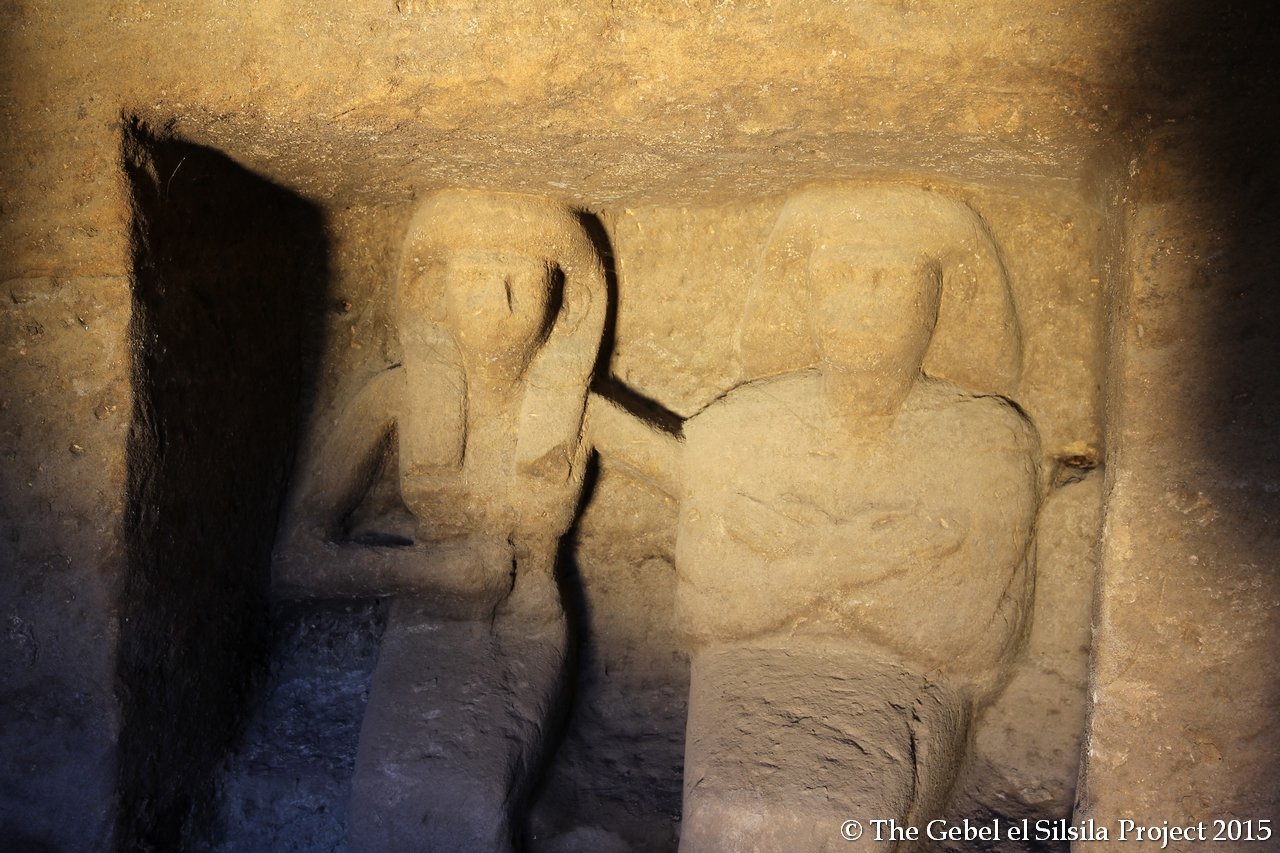
Photo: via Gebel el Silsila Survey Project.
Statues of Neferkhewe and Ruiuresti, found at Gebel el Silsila.
Photo: via Gebel el Silsila Survey Project.
Shrines devoted to Neferkhewe, who was an important politician during the rule of Pharaoh Thutmose III, and his wife Ruiuresti have been found near the Nile River in Upper Egypt.
The statues were found inside two cenotaphs (empty tombs erected in honor of a person or group of people whose remains are elsewhere) at the Gebel el Silsila site, where a total of 32 cenotaphs have been found along the Nile.
The historically significant area is also where many of the sandstone blocks used to build Egypt’s temples were quarried.
Detail of the statues found at Gebel el Silsila.
Photo: via Gebel el Silsila Survey Project.
The team of the Gebel el Silsila Survey Project has discovered a total of six statues of the couple, some with round faces and big ears, according to Live Science. The second cenotaph contains four statues and carvings depicting Neferkhewe with his wife and two children.
John Ward, assistant director of the excavation, said that the statues and the carved alcoves in which they are located had been exposed to the elements for at least 1,500 years before being buried, but that the carvings were still in great condition.
The presence of alcoves hosting the statues, which were only built to honor elite families, implies that Neferkhewe and Ruiuresti were a political “power couple” at the time. In fact, Neferkhewe oversaw the Medjay—now northern Sudan—during the rule of Pharaoh Thutmose III some 3,500 years ago.
Detail of the carvings found at Gebel el Silsila.
Photo: via Gebel el Silsila Survey Project.
“To be there when their faces look back at you after 2,000 years of being covered with silt is an experience that can’t be put into words,” Ward told Live Science. “It’s just a pure honor.”
“To preserve one’s name, it’s pivotal to the religion. Without a name you wouldn’t have an identity in the afterlife, so you wouldn’t exist,” Ward said about the importance that the discovery of the statues would have had for the couple, adding that saying Neferkhewe’s name out loud for the first time in millennia” gives him the immortality that he dreamed of.”
Detail of the statues found at Gebel el Silsila.
Photo: via Gebel el Silsila Survey Project.